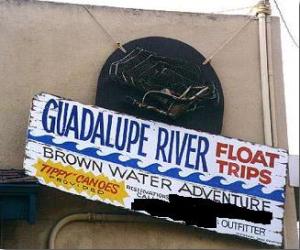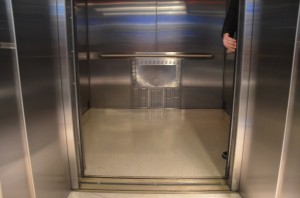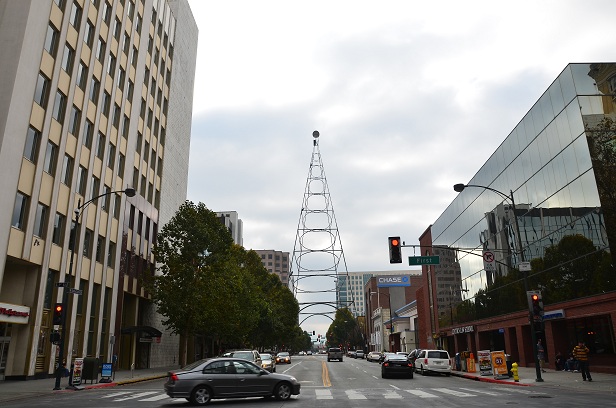A few of our favorite San Jose sites had recent posts about the short lived Guadalupe Lake, a small lake with boat rentals that was formed in 1914 with the damming of the Guadalupe River. This got us wondering here at Searchlight SJ, when the rains return and the Guadalupe rises, is the river still navigable by boat? After some extensive searching we came across this intriguing and somewhat amazing sign:
That’s right, brown water rafting (new favorite term) right here in our own backyard! In rainy years the Guadalupe can be floated on in several different areas. One particularly memorable route sets sail from Park Ave downtown and takes you all the way into the Alviso Slough that feeds into the Bay. One veteran of these trips recommends that they be made in early spring, only after a winter with strong rains.
Sadly there are no dedicated Guadalupe River guides however experienced kayakers can learn about some of San Jose’s urban runs here. Care to take your urban kayaking to the next level? Check out this Stanford Kayak Club video where members not only found Guadalupe River runs, but also some fast moving surf under 880 perfect for back flips and barrel rolls. For those less adventurous the recently completed Alviso Slough boat dock offers gentle kayaking at the southernmost tip of the Bay.
Bon voyage!






